#chersky
Text












Rayanne: Now you've got an iron-clad, perfect excuse never to talk to me again. You should be celebrating.
Sharon: You think I'm happy about this? Somebody I care about has been hurt.
MY SO-CALLED LIFE (1994–1995) | 1.17 “Betrayal”
10 notes
·
View notes
Text
and I love you, it's ruining my life...
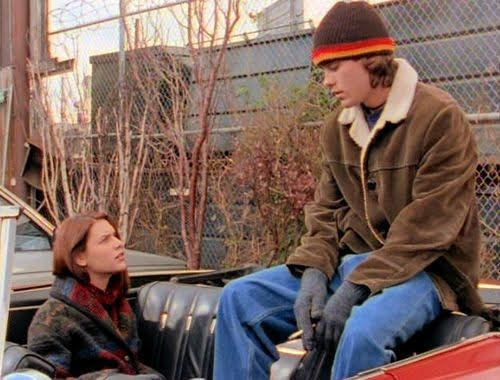
I touched you for only a fortnight..
#angela and jordan#jordan catalano#angela chase#angelan#90s#90s tv shows#90s tv series#my so called life#jared leto#claire danes#rayanne graff#sharon cherski#taylor swift#the eras tour#the tortured poets department#fortnight#love
2 notes
·
View notes
Quote
There's the people who you've known forever, who know you in this way that other people can't, because they've seen you change. They've let you change.
Angela Chase
#angela chase#quote#tv quotes#sharon cherski#my so-called life#best friends#changes#episode 1x08#strangers in the house
23 notes
·
View notes
Text
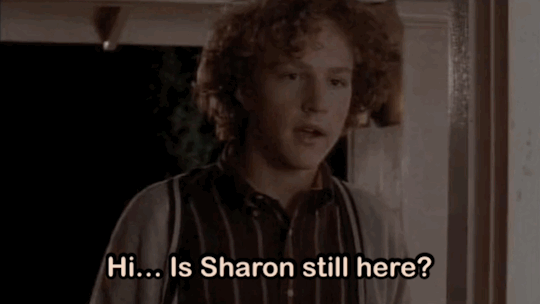


#my so called life#devon gummersall#claire danes#devon odessa#90s#shipping#sparks#strangers in the house#life#the way they look at each other#brian krakow#sharon cherski#angela chase
1 note
·
View note
Text
Rayanne Graff and Sharon Cherski would have been end game if MSCL had 5+ seasons, change my mind
9 notes
·
View notes
Text
The Batagaika Crater, located in the Chersky Range of northeastern Siberia, Russia, is the largest permafrost crater in the world. One kilometer (0.6 miles) long, 100 meters (328 feet) deep, and growing, it has been sinking due to thawing permafrost since the 1960s. Batagaika’s rim is extremely unstable and the site of regular landslides, retreating by as much as 30 meters (98 feet) in a single year.
67.580000°, 134.771400°
Source imagery: Maxar
105 notes
·
View notes
Text
a random for the fellow "olds" around
feels like we are sleeping on the steddie potential of a my so called life au
eddie as jordan catalano is right there
steve having his own identity crisis a la angela chase and messing with his signature hair
robin and dustin for the rayanne and ricky vibes
nancy 🤝sharon cherski writing the book on that tragic comphet life
tommy h as brian krakow lol
I just need to hear Steve say this to Eddie okay I need it like air

Or THIS
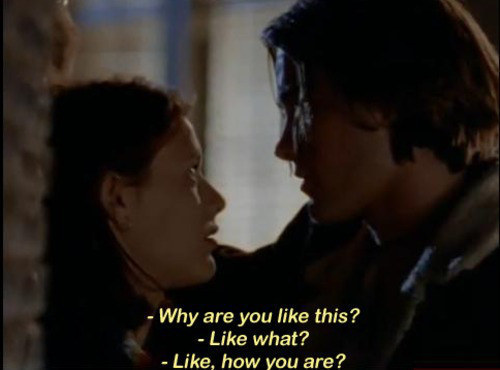
#steddie#eddie munson#steve harrington#steddie au#my so called life#im stoned get off my lawn if u hate this lol
14 notes
·
View notes
Text
- ͙۪۪̥˚┊❛ who i write for ❜┊˚ ͙۪۪̥◌

-
my so-called life:
-brian krakow
-angela chase
-rayanne graff
-jordan catalano
-rickie vasquez
-sharon cherski
-
american psycho:
-paul allen
-patrick bateman
-jean
-
euphoria:
-rue bennett
-jules vaughn
-cassie howard
-
succession:
-roman roy
-greg hirsch
-
the perks of being a wallflower:
-charlie kelmeckis
-patrick button
-sam button
-
my babysitter's a vampire:
-ethan morgan
-benny weir
-rory keaner
-
stranger things:
-mike wheeler
-will byers
-steve harrington
-jonathan byers
-robin buckley
-
requests are open!
#stranger things#my babysitters a vampire#my so called life#succession#american psycho#euphoria#the perks of being a wallflower#x reader#self insert#requests open#igby writes
7 notes
·
View notes
Text
Events 9.18 (after 1940)
1940 – World War II: The British liner SS City of Benares is sunk by German submarine U-48; those killed include 77 child refugees.
1943 – World War II: Adolf Hitler orders the deportation of Danish Jews.
1944 – World War II: The British submarine HMS Tradewind torpedoes Jun'yō Maru, killing 5,600, mostly slave labourers and POWs.
1944 – World War II: The Battle of Arracourt begins.
1945 – General Douglas MacArthur moves his general headquarters from Manila to Tokyo.
1947 – The National Security Act reorganizes the United States government's military and intelligence services.
1948 – Operation Polo is terminated after the Indian Army accepts the surrender of the army of Hyderabad.
1948 – Margaret Chase Smith of Maine becomes the first woman elected to the United States Senate without completing another senator's term.
1954 – Finnish president J. K. Paasikivi becomes the first Western head of state to be awarded the highest honor of the Soviet Union, the Order of Lenin.
1960 – Fidel Castro arrives in New York City as the head of the Cuban delegation to the United Nations.
1961 – U.N. Secretary-General Dag Hammarskjöld dies in an air crash while attempting to negotiate peace in the Katanga region of the Democratic Republic of the Congo.
1962 – Burundi, Jamaica, Rwanda and Trinidad and Tobago are admitted to the United Nations.
1962 – Aeroflot Flight 213 crashes into a mountain near Chersky Airport, killing 32 people.
1973 – The Bahamas, East Germany and West Germany are admitted to the United Nations.
1974 – Hurricane Fifi strikes Honduras with 110 mph winds, killing 5,000 people.
1977 – Voyager I takes the first distant photograph of the Earth and the Moon together.
1980 – Soyuz 38 carries two cosmonauts (including one Cuban) to the Salyut 6 space station.
1981 – The Assemblée Nationale votes to abolish capital punishment in France.
1982 – The Sabra and Shatila massacre in Lebanon comes to an end.
1984 – Joe Kittinger completes the first solo balloon crossing of the Atlantic.
1988 – The 8888 Uprising in Myanmar comes to an end.
1988 – General Henri Namphy, president of Haiti, is ousted from power in a coup d'état led by General Prosper Avril.
1990 – Liechtenstein becomes a member of the United Nations.
1992 – An explosion rocks Giant Mine at the height of a labor dispute, killing nine replacement workers in Yellowknife, Canada.
1997 – United States media magnate Ted Turner donates US$1 billion to the United Nations.
1997 – The Anti-Personnel Mine Ban Convention is adopted.
2001 – First mailing of anthrax letters from Trenton, New Jersey in the 2001 anthrax attacks.
2007 – Buddhist monks join anti-government protesters in Myanmar, starting what some call the Saffron Revolution.
2011 – The 2011 Sikkim earthquake is felt across northeastern India, Nepal, Bhutan, Bangladesh and southern Tibet.
2012 – Greater Manchester Police officers PC Nicola Hughes and PC Fiona Bone are murdered in a gun and grenade ambush attack in Greater Manchester, England.
2014 – Scotland votes against independence from the United Kingdom, by 55% to 45%.
2015 – Two security personnel, 17 worshippers in a mosque, and 13 militants are killed during a Tehrik-i-Taliban Pakistan attack on a Pakistan Air Force base on the outskirts of Peshawar.
2016 – The 2016 Uri attack in Jammu and Kashmir, India by terrorist group Jaish-e-Mohammed results in the deaths of nineteen Indian Army soldiers and all four attackers.
2021 – A ferry capsizes in Guizhou province, China due to bad weather, leaving ten people dead and five missing.
1 note
·
View note
Text
By Orlando Mayorquin
At a time when the mighty woolly mammoth roamed the Earth, some 46,000 years ago, a minuscule pair of roundworms became encased in the Siberian permafrost.
Millennia later, the worms, thawed out of the ice, would wriggle again, and demonstrate to scientists that life could be paused — almost indefinitely.
The discovery, published this week in the peer-reviewed journal PLOS Genetics, offers new insight into how the worms, also known as nematodes, can survive in extreme conditions for extraordinarily long periods of time, in this case tens of thousands of years.
In 2018, Anastasia Shatilovich, a scientist from the Institute of Physicochemical and Biological Problems in Soil Science RAS in Russia, thawed two female worms from a fossilized burrow dug by gophers in the Arctic.
The worms, which were buried approximately 130 feet in the permafrost, were revived simply by putting them in water, according to a news release from the Max Planck Institute of Molecular Cell Biology and Genetics in Germany.
Called Panagrolaimus kolymaensis, after the Kolyma River in Russia, where they were found, the worms were sent to Germany for further study. The creatures, which have a life span measured in days, died after reproducing several generations in the lab, researchers said.
Using radiocarbon dating, researchers determined the specimens were frozen between 45,839 and 47,769 years ago, during the late Pleistocene.
The roughly millimeter-long worms were able to resist extreme low temperatures by entering a dormant state called cryptobiosis, a process researchers at the institute have been trying to understand.
No nematodes had been known to achieve such a dormant state for thousands of years at a time, Teymuras Kurzchalia, a professor emeritus at the institute who was involved in the study, said on Saturday.
“The major take-home message or summary of this discovery is that it is, in principle, possible to stop life for more or less an indefinite time and then restart it,” Dr. Kurzchalia said.
Researchers identified key genes in the nematode that allow it to achieve the cryptobiotic state. The same genes were found in a contemporary nematode called Caenorhabditis elegans, which can also achieve cryptobiosis.
“This led us, for instance, to understand that they cannot survive without a specific sugar called trehalose,” Dr. Kurzchalia said. “Without this sugar, they just die.”
While there are no clear practical applications for a deep understanding of cryptobiosis, that should not be a reason to stop the research, Dr. Kurzchalia said.
The discovery of semiconductors, or of the double helix structure of DNA, he said, took decades to yield a practical use, but ultimately turned out to be revolutionary.
“That’s the interest of science,” he said. “You end somewhere you didn’t presume.”
Cryptobiosis could, perhaps one day, be engineered by humans, he added.
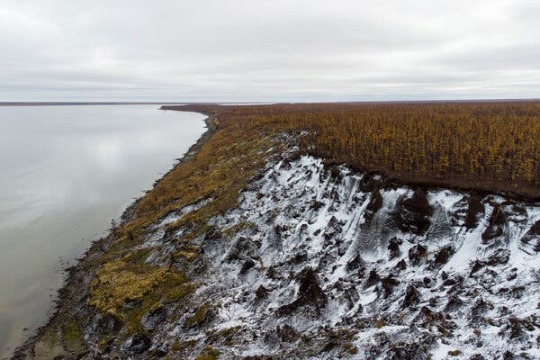
Melting permafrost near the Kolyma River southwest of the town of Chersky in the Russian Far East in 2021.Credit...Maxim Shemetov/Reuters
Another researcher in the study, Dr. Philipp Schiffer of the Institute for Zoology at the University of Cologne, said the more relevant application of the findings “is that in times of global warming we can learn a lot about adaptation to extreme environmental conditions from these organisms, informing conservation strategies and protecting ecosystems from collapsing.”
The Siberian permafrost has long offered the scientific community a window into the organisms of the distant past. Ancient viruses, mummified bodies and a suite of microscopic creatures have been resurrected from the ice over the years.
Amid the Covid pandemic, some have expressed concerns about unearthing ancient microorganisms, fearing that doing so could have deadly consequences for mankind.
Dr. Kurzchalia conceded that, theoretically, such a thing was possible, though he emphasized that the study of these organisms is conducted in sterile, lab-controlled settings.
A more prudent concern, in Dr. Kurzchalia’s view, is the threat of global warming significantly thawing the permafrost in Siberia. In that case, there would be no control over what is reintroduced to the world.
Though the ancient worms in the study died, that outcome was not unexpected given their life cycle, Dr. Kurzchalia said.
“Sleeping Beauty, when she came out, she didn’t live another 300 years,” he said.
1 note
·
View note
Text
By Orlando Mayorquin
At a time when the mighty woolly mammoth roamed the Earth, some 46,000 years ago, a minuscule pair of roundworms became encased in the Siberian permafrost.
Millennia later, the worms, thawed out of the ice, would wriggle again, and demonstrate to scientists that life could be paused — almost indefinitely.
The discovery, published this week in the peer-reviewed journal PLOS Genetics, offers new insight into how the worms, also known as nematodes, can survive in extreme conditions for extraordinarily long periods of time, in this case tens of thousands of years.
In 2018, Anastasia Shatilovich, a scientist from the Institute of Physicochemical and Biological Problems in Soil Science RAS in Russia, thawed two female worms from a fossilized burrow dug by gophers in the Arctic.
The worms, which were buried approximately 130 feet in the permafrost, were revived simply by putting them in water, according to a news release from the Max Planck Institute of Molecular Cell Biology and Genetics in Germany.
Called Panagrolaimus kolymaensis, after the Kolyma River in Russia, where they were found, the worms were sent to Germany for further study. The creatures, which have a life span measured in days, died after reproducing several generations in the lab, researchers said.
Using radiocarbon dating, researchers determined the specimens were frozen between 45,839 and 47,769 years ago, during the late Pleistocene.
The roughly millimeter-long worms were able to resist extreme low temperatures by entering a dormant state called cryptobiosis, a process researchers at the institute have been trying to understand.
No nematodes had been known to achieve such a dormant state for thousands of years at a time, Teymuras Kurzchalia, a professor emeritus at the institute who was involved in the study, said on Saturday.
“The major take-home message or summary of this discovery is that it is, in principle, possible to stop life for more or less an indefinite time and then restart it,” Dr. Kurzchalia said.
Researchers identified key genes in the nematode that allow it to achieve the cryptobiotic state. The same genes were found in a contemporary nematode called Caenorhabditis elegans, which can also achieve cryptobiosis.
“This led us, for instance, to understand that they cannot survive without a specific sugar called trehalose,” Dr. Kurzchalia said. “Without this sugar, they just die.”
While there are no clear practical applications for a deep understanding of cryptobiosis, that should not be a reason to stop the research, Dr. Kurzchalia said.
The discovery of semiconductors, or of the double helix structure of DNA, he said, took decades to yield a practical use, but ultimately turned out to be revolutionary.
“That’s the interest of science,” he said. “You end somewhere you didn’t presume.”
Cryptobiosis could, perhaps one day, be engineered by humans, he added.

Melting permafrost near the Kolyma River southwest of the town of Chersky in the Russian Far East in 2021.Credit...Maxim Shemetov/Reuters
Another researcher in the study, Dr. Philipp Schiffer of the Institute for Zoology at the University of Cologne, said the more relevant application of the findings “is that in times of global warming we can learn a lot about adaptation to extreme environmental conditions from these organisms, informing conservation strategies and protecting ecosystems from collapsing.”
The Siberian permafrost has long offered the scientific community a window into the organisms of the distant past. Ancient viruses, mummified bodies and a suite of microscopic creatures have been resurrected from the ice over the years.
Amid the Covid pandemic, some have expressed concerns about unearthing ancient microorganisms, fearing that doing so could have deadly consequences for mankind.
Dr. Kurzchalia conceded that, theoretically, such a thing was possible, though he emphasized that the study of these organisms is conducted in sterile, lab-controlled settings.
A more prudent concern, in Dr. Kurzchalia’s view, is the threat of global warming significantly thawing the permafrost in Siberia. In that case, there would be no control over what is reintroduced to the world.
Though the ancient worms in the study died, that outcome was not unexpected given their life cycle, Dr. Kurzchalia said.
“Sleeping Beauty, when she came out, she didn’t live another 300 years,” he said.
0 notes
Text
Lost city of ubar pictures

LOST CITY OF UBAR PICTURES MOVIE
It could even tie in the lost Library of the Czars, supposedly created by Ivan the Terrible. The film could see Holland's Drake traversing the snow-bitten Chersky Mountains, or possibly the vast wilderness of Siberia, which hosts random explosions attributable to underground methane pockets. It is INCREDIBLY sparsely populated, with less than 35 million people in an area almost twice the size of the continental United States (which hosts over 300 million people). In many ways, northern Russia is among the planet's last frontiers. Instead, they were presided over by a "White Tsar", who ruled according to ancient, just ideals. A common tale among Russian peasantry, it was believed that the inhabitants of Opona - also known as the Golden Land or Belovodye - lived happy, peaceful lives, undisturbed by the state, or by the state's noble, ruling class. In Russian folklore, Opona is said to lie at the edge of the flat Earth, where it is only accessible to the most courageous of explorers (i.e. Also, don't expect to see any of the lost cities already covered in the games, as it's been stated that the film won't be a retread of any preexisting story. We've narrowed it down to ten.ĭon't expect to see Atlantis on this list, as it's been done to death. But what lost city can we expect? Luckily, history has given us a lot to choose from.
LOST CITY OF UBAR PICTURES MOVIE
If we're following trends, the movie will do the same. Shambhala, Ubar, and Libertalia), with artifacts like the Cintamani Stone from Uncharted 2 taking a back seat to the spectacle of ancient, legendary locales. The Uncharted games have differentiated themselves from Indiana Jones, in that while Indiana Jones usually goes after artifacts, Nathan Drake and company hunt down lost cities (i.e. Though it's gotten some traction recently - Tom Holland was cast as Nate, Mark Wahlberg as Sully, and Antonio Banderas as, well, someone - the film's production has been pushed back ONCE AGAIN due to the global COVID-19 outbreak.��t this point, the Uncharted film is starting to feel like something out of one of the games - that is, a fabled, mysterious, oft-detailed artifact that has thus far eluded our gaze. The reason why only the ruins of the fort have remained can be explained by the fact that people probably lived in tents at the time, and it was not uncommon for a fort to be the only permanent structure of a city.Announced in 2009, the film's ups and downs - including shuffling through multiple directors - have been frequent and severe. At the deepest end of the sinkhole, a tunnel has been built that leads farther down underground, where the remains of sunken walls can be found. An ancient stone window, supposed to be 800 MESSRS. cliff dwellings at Mesa Verde, and Nicholas Clapps inspired use of satellite photography to locate the buried city of Ubar on the Arabian peninsula. Other parts have sunk lower, but some are still clearly visible. The only change of importance is the produc - dom of the city of Edinburgh. Sections of the fort still stand at the edge of the sinkhole and can be accessed by visitors. The fort in Shisr, therefore, literally sank into the desert sands. Furthermore, part of this fort collapsed when a sinkhole formed underneath, and several feet of sand eventually covered all the ruins. The ruins suggest there used to be a fort surrounded by eight walls with a tower at each corner, a description that matches the description of the legendary Ubar in ancient documents. Whether or not the ruins called Ubar in Shisr are actually the remains of the legendary Ubar is contested.Īrchaeological excavations suggest this outpost was involved in the incense trade, meaning it may have been a sizable settlement. The ruins found in Shisr are officially named Ubar. This is fertile ground, where legends and archaeological studies plant their seeds for wild speculations to grow.Īccording to one of these speculations, the ruins of Ubar have been found in the village today known as Shisr in Dhofar Region, Oman. It’s even been dubbed the “Atlantis of the Sands.” Ubar and Atlantis have something else in common, too-there’s no unanimous consensus that either ever even existed.įinding the skeleton of a city that perhaps never existed can be a daunting proposition, but explorers and scholars are well aware of the prestige they could gain should they discover the ruins. Ubar is the Arabian equivalent of Atlantis, except that instead of sinking to the bottom of the sea, legend says it disappeared into the desert sands.

0 notes
Text
Radical Rewilding in the Arctic to save us from thawing permafrost
Deep in the Russian tundra, where woolly-mammoths used to roam and temperatures reach -50°C, an eccentric Russian scientist has been studying the Arctic’s permafrost for the last 40 years. Sergei Zimov moved to the edge of Russia, namely Chersky, with his wife Galina in 1980. Chersky is located on the banks of the Kolyma river, further East than Japan, and further north than Iceland, its location was suitable for Gulags—and not much else.
By the etime the Zimovs moved, the camps had shut down. Their remoteness was what they wanted: freedom from the vigilant eye of the Communist Party.
“To be a prophet, you must live in the desert.”—Mr Zimov.
A geophysicist and contrarian, Zimov founded the Northeast Science Station (NESS) for Arctic research, and several insights on permafrost and melting Arctic-ice are drawn from his studies.
Understanding the Permafrost Thaw
As global temperatures rise, the Arctic temperatures rise faster, in some areas registering 8°C warmer than only a decade ago. The real issue is once Arctic permafrost (a thick layer of frozen soil) begins to melt, its million year old deposits of minerals (carcasses, and plant material) are exposed, becoming food for microbes, which convert it into CO2 and methane—greenhouse gases. As we know, these gases in turn accelerate the planet’s warming, and therefore also accelerate the thawing of the permafrost, creating a vicious feedback loop with possibly catastrophic consequences.
“It’s not anything we’re doing directly, and that makes it far harder to control.”—Robert Max Holmes, deputy director of the Woodwell Climate Research Centre
Northern Permafrost contains 1.600bn tonnes of carbon—twice as much carbon as is currently in the atmosphere. The issue with thawing, is that there is no consensus on how it will actually thaw: eg. all at once, or gradually, or creating lakes that attract more microbes…“The more permafrost is studied, the more scientists find surprises out there that they don’t know enough about”—the Economist.
Zimov’s Solution: Radical Rewilding at the Pleistocene Park
“Every scientist now appreciates the importance of the carbon in the permafrost, a lot of that can be traced to Zimov.”—Max Holmes, deputy director of the Woodwell Climate Research Centre
Zimov, albeit a polarising figure, remains a leading scientist in understanding permafrost thaw. Today, his research center NESS has become a global hub.
His solution involves returning the Arctic to the Pleistocene epoch’s ecosystem: a grassland known as the Mammoth Steppe—back when woolly mammoths, bisons, reindeers, lions, and wolves roamed the icy north. His project would be to radically rewild the Siberian tundra in order to bring back the grass. The reintroduction of large mammals would tamp down moss, knock down tress, and churn up the soil, allowing the grass to flourish again. Grass in turn reflects more light and reduces the amount of heat absorbed by the soil.
Most importantly, the animals would also compress the winter snow, which creates a thick layer that does not allow the cold temperatures to reach the permafrost below. The thinner layer of snow would cool the permafrost more in the winter months, ensuring that it does not thaw in the summer.
In order to achieve this, Zimov has created the Pleistocene Park, rewilding a mixture of Pleistocene surviving herbivores: Yakutian horses, bisons, musk oxen, elk, reeindeers, sheep, yak and kalmyk cattle. The reintroduction of these animals has in fact turned the mossy and wet tundra into grassland.
So far, Zimov’s results are promising. The animals have helped grasslands re-emerge. The average annual soil temperatures in grazed area are 2.2°C cooler than in the tundra, and carbon is being sequestred by the grassland too.
Zimov hopes to scale his project to other areas in the Arctic. Their long-term dream is to host woolly mammoths again one day, forming a partnershing with George Church, of Harvard University, who is researching how to revive these ancient beasts using CRISPR gene-editing technology.
Source: One Russian scientist hopes to slow the thawing of the Arctic, the Economist.
vimeo
#2021Q1#rewilding#rewildingbisons#arctic#tundra#siberia#iceage#pleistocene#epich#sergeizimov#russia#science#chersky
0 notes
Photo






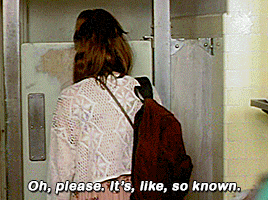
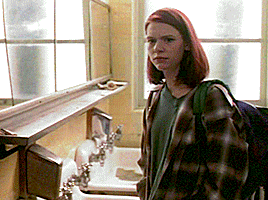
MY SO-CALLED LIFE (1994–1995) | 1.01 “Pilot”
#my so called life#mscledit#sharon cherski#angela chase#tvedit#mine#i love how ambiguous that is#and that her question never actually gets answered#it's like a choose your own backstory adventure
83 notes
·
View notes
Text



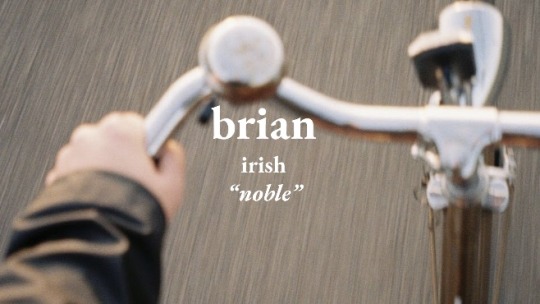



my so-called life + name meanings
#angela chase#rayanne graff#rickie vasquez#brian krakow#sharon cherski#jordan catalano#danielle chase#mscl#my so called life#name meanings#mscledit#mscl edit
85 notes
·
View notes
Text
Bathroom Talks
Sharon/Rayanne, 500+ words
Someone bounds out of a stall door, and Sharon just knows it’s Rayanne. Something about the infectious, chaotic energy she can feel emanating from that area of the girl’s bathroom. And also the sounds, fabric ruffling and metal jangling. Rayanne always wears way too much jewelry, it’s like, embarrassing.
“So, Cherski. What super fun things are you doing with Angela this weekend?”
Sharon stops fluffing her hair at the sink and glances at Rayanne in the mirror. “Nothing. I have, like, so many other things to do. I have to finish my English essay for Mr. Katimski, work on the layout for the senior’s page, go through all my old clothes for the clothing drive the church is putting together, and—why?”
Rayanne is chewing on her thumbnail. “No reason.”
“I’m not gonna, like, tell you what Angela’s up to.”
Read the rest on AO3!
#my so called life#mscl#sharon cherski#rayanne graff#rayanne x sharon#sharon x rayanne#every time i finish the show im so sad :(((#this is just a little convo between our girls#before they inevitably start dating ;))#my writing
6 notes
·
View notes